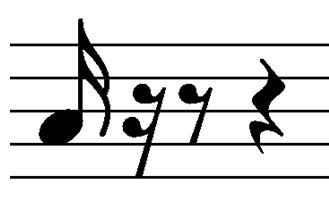Today’s entry is something that I’ve read just recently.
It sites points that are very true and can give you wider options whether you choose to learn how how to play the piano through private piano lessons or self learn piano lessons with the aids of technology.
This blog article is from Learn How to Play Piano Chords blog.
Piano Lessons: Online or Offline
There are many ways to learn how to play the piano. You can either choose private piano lessons or self-learning through online piano lessons or piano dvds.
Both different methods of piano lessons have its pros and cons. In this entry, let’s try to differentiate them and see which piano lessons suit you.
Private Piano Lessons
Having private piano lessons are perfect for toddlers and kids. It teaches them the essential and basics of piano playing. Teaching piano students at home help both the teacher and the student to focus on the piano lessons. Also learning this way allows the student to ask questions regarding the lessons. Piano beginners can easily understand the lessons because it is real and on the spot.
Although that is said, there are a lot of disadvantages with private piano lessons. First are the distractions. Lessons done at home can be distracted even by just a simple phone call or a dog barking. Another thing, with private piano lessons you could either study at home (with more distractions such as television) or at your piano teacher’s home (less distraction, boring experience).
Another downside of private piano lesson is if you are already an adult. Of course no adult would want to be taught piano sheet music like “Twinkle, Twinkle Little Star”. Too childish. Also private piano lessons can be really expensive. It’s almost $100 per month. You can buy groceries with that already.
Self-Learning Piano Lessons
If you don’t have enough time to commit on private piano lessons or don’t have enough money for private piano lessons then there is always an alternative. You can always try self-learning piano lessons trough some modern methods. When you’re already a grown-up these adult piano lessons for beginners will be you solutions.
One of the best things you can try is online piano lessons. A lot of people and companies are now posting free online piano lessons everywhere on the internet. You can always try YouTube piano videos for starters. Or websites that offers free online piano lessons. No matter where you go online piano lessons are a sure hit. It’s free, easy to understand and you can control anytime you take the lessons.
Maybe you want something more reliable, then you can try buying or borrowing from libraries piano dvds. Piano dvds are available on Amazon or on websites that offers piano lessons. You’re just going to pay extra for lifelong piano lessons on your own home.
You can also try piano lesson books. It also has extensive explanations of the lesson without the visual aid which is in most cases very important.
Or you can try something you can always listen or watch wherever you are, PODCASTS. Yes, the great invention of ITunes can now be used as an easier way of learning free piano lessons. Piano podcasts can be played anywhere using your iPhone or iPod devices or even on your own computer.
Conclusion
So what’s the verdict? If you have the time and the money and a quiet place to learn, you can always try private piano lessons.
But if you are an adult already with no free time and enough money for private piano lesson, you can always go for self-learn piano lessons. Same results minus the expense, the pressure and the money.
Learn by yourself! It’s easier and cheaper. Online piano lessons are a great answer to adult piano lessons for beginners and toddlers’ first easy piano notes.
Original blog post: Piano Lessons: Online or Offline





